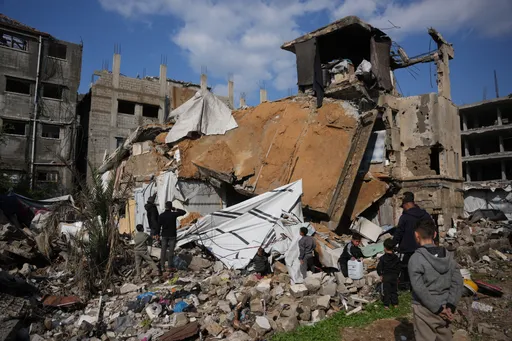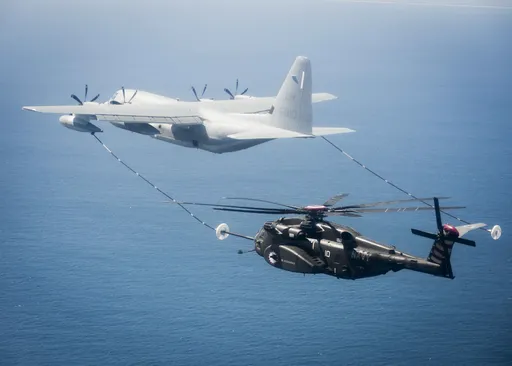Kinshasa, (DRC)– Two makeshift ships make last-minute preparations to leave the port of Kinshasa, the capital of the Democratic Republic of the Congo (DRC), to begin an epic, three-week journey on the mighty Congo River to the north-western city of Mbandaka.
Mbandaka, the provincial capital of the newly-demarcated province of Equateur, is located nearly 600 kilometres from Kinshasa.
On board, Nene Moseka packs medical supplies which she would be selling or exchanging for dried fish in the remote villages of the Grand Equateur, a vast and difficult-to-access region the size of Poland and Austria.
“The Grand Equateur is one of the most underdeveloped and neglected lands in Congo. Many areas lack adequate roads and are located deep down in the forest and along waterways, meaning you can only get there by boat,” she said.
According to Moseka, sick people living in these areas face huge challenges to get medical care because there are no clinics, and where there is one, the facility lacks almost everything from syringes to basic medicines for headaches, electricity and running water.
“It’s a sheer struggle to survive for these communities,” she said.
“I have been praying to God to bring in white people to help us solve this problem because our politicians have done nothing for us in the past 60 years,” Francois Ikoko, a ship passenger heading to his hometown of Bikoro, said.
Drones for health
Ikoko’s heart-felt plea seems to have been heard by VillageReach, a US-based international non-governmental organisation (NGO), which recently launched a “Drones for Health” programme, in association with Swoop Aero and the DRC government, and with the permission of the country’s Civil Aviation Authority.
Swoop Aero is based in Melbourne, Australia and the programme is funded by the Bill and Melinda Gates Foundation, Patrick J. McGovern Foundation, Crown Family Philanthropies and the Global Alliance for Vaccination and Immunization (GAVI).
The drone network, currently made up of a fleet of drones covering 22,000 square kilometres, routinely delivers health products – as well as on call – to 70 hard-to-reach health facilities (25 of which are drone landing sites) serving over half a million people.
The partnership between Swoop Aero and VillageReach began in 2019, following a successful bid for a tender published by VillageReach for the distribution and movement of essential vaccinations in the Equateur Province, Swoop Aero said.
Since late December 2020, operations conducted by the Drones for Health Programme have made 170 commodity flights and 75 flights carrying essential vaccines operating from 13 drone sites. In total they have travelled 5,807 kilometres and distributed 16,000 vaccines.
Drones have also transported 32 kilograms of immunisation products and personal protective equipment (PPE) for 14 health facilities, returning with lab samples and reports.
Swoop Aero claims that two months of life-saving vaccines were delivered allowing more than 620 children to be vaccinated.
The primary advantage of Swoop Aero’s medical drone logistics platform is that it reduces a 90-minute journey, traditionally taken by boat, down to 12 minutes by drone.
Challenges
Delivering health products in the Equateur province, a blanketed-rainforest region lacking everything from road to electricity and telecommunication infrastructure, has been a longtime challenge. The region relies heavily on the Congo River and adjacent waterways for transportation, making the ground journey from Mbandaka to remote communities long and difficult.
Introducing drone technology, which is relatively new, in an area such as this, did not promise to be smooth-sailing.
India Birrell, Swoop Aero Commercial Programmes Manager, told TRT World that the geographical landscape was a major hurdle as they established and scaled up network operations throughout the DRC.
“Road and transport infrastructure is significantly limited in remote communities, which has caused difficulties and time delays sending teams and equipment to these regions and successfully setting up the network,” Birrell explained.
“Moreover, poor communication and internet connectivity has meant Swoop Aero has had to develop new and innovative ways to ensure that a constant and reliable stream of information pertaining to flights, deliveries and pickups of essential health supplies, is maintained.”
National roll out?
The news of the “Drones for Health” launch seems to have spread like bushfire across regions, where populations hope the project will be extended to them.
“When I saw it in the news, I was like wow, if these white people can do the same in our villages, they will surely save many lives. Our children are dying unnecessarily just because there is no medication to treat them. It’s sad,” a mother of six, Madeleine Mundele, says emotionally.
Asked if there were plans to roll out such projects in other provinces in the near future, VillageReach senior communications manager Kat Tillman could not reveal much, except to say that planning was underway with the government.
However, Birrell said Swoop Aero was looking forward to establishing a nationwide drone logistics network in the DRC in the next five years.
“Our initial approach will likely be based on the phased scaling up of the network to neighbouring provinces such as Bandundu and Kongo Central,” Birrell pointed out.
However, the ongoing violence in the east of the country might be hindering the scaling of the nationwide network, according to Birrell.
Dysfunctional
Nevertheless, given the dysfunctional state of successive Congolese governments, some observers are wondering whether the project will last long enough to leave a legacy and considerably improve the lives of the people.
“This is an absolutely super idea that can be rolled out everywhere. But I’m not sure if our government will be serious enough to meet its commitments in the future given their chaotic and selfish modus operandi,” Danny Masudi, a medical school student, wondered.
Approached to comment on the issue, VillageReach’s Tillman was evasive, saying, “We don’t comment on the political status of the countries we work in as our sole focus is on strengthening health systems.”
Birrell said since starting operations in the DRC, Swoop Aero has not experienced any kind of dysfunctionality pertaining to the government's commitments made to the project and its associated stakeholders.
“Processes and associated flight activities have indeed been slow to come to fruition, but this remains a commonality experienced across low, middle and high income nations.”
Africa’s future is drones
According to Samuel Ajadi, GSMA Senior Insights Manager, unmanned Aerial Vehicles (UAVs), generally known as drones, can be a viable option to bridge healthcare access gaps and address last-mile delivery challenges and infrastructural inadequacies.
VillageReach said the drones would become a means of rapid communication in addition to a traditional means of transport, to ensure health facilities have appropriate stocks of immunisation products on a consistent basis, and no children go unvaccinated.
“There is a great potential for the technology to have a genuine and large scale impact across other African nations. We remain open and excited at the prospect of future opportunities to support other nations and communities throughout the continent with medical drone logistics,” Birrell pointed out.
UNICEF Executive Director Henrietta Fore said humanitarian and development programme delivery in Africa and beyond could benefit significantly from the application of drone technology.
Bearing in mind that drones have the potential of changing the face of some of Africa’s most impoverished and conflict-prone spaces, the UN children's agency launched its first drone and data academy in January 2020 in the Malawian capital Lilongwe.
The academy is set to develop expertise in the use of drones for humanitarian, development and commercial purposes across the continent, and plans to train approximately 150 students to build and pilot drones by 2021, the UN said.
In the DRC, Swoop Aero, which is already conducting similar operations in five countries, has trained a local team of four drone operators and two pilots, and 16 health facility staff. The provincial health department and VillageReach conducted additional training at 25 health facilities.
Birrell told TRT World that the training given to these team members involves how to operate and manage the aircraft and how to safely receive and send medical cargo via drone.
“The local teams are provided the opportunity to upskill in a new technology and gain an in-depth knowledge of aviation procedures and terminology, including vertical takeoff and landing (VTOL) capability as well as beyond visual line of sight (BVLOS).”
























